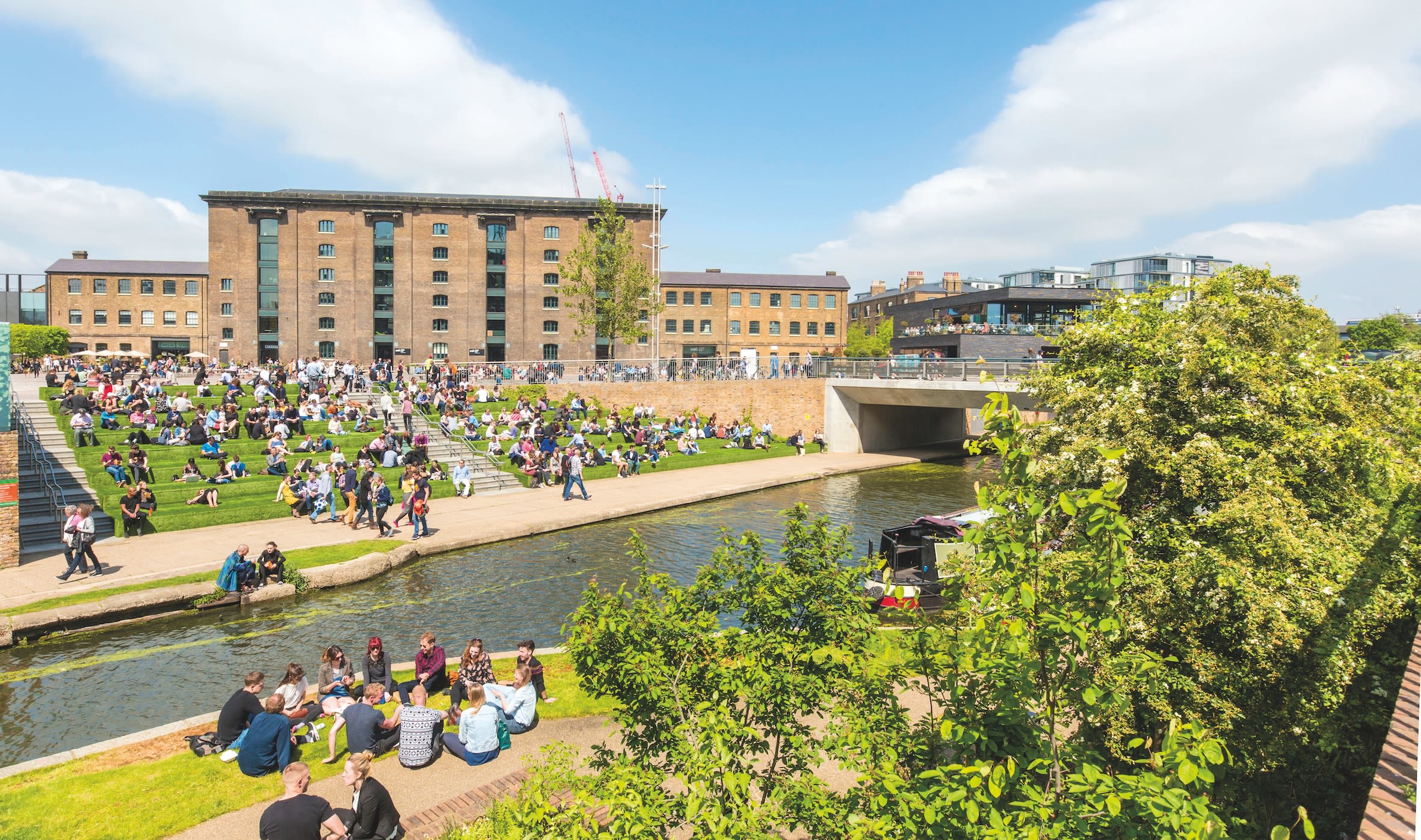A new report on participative cultural placemaking

- Written byPress Office
- Published date 25 June 2024

We have published a new report From Flagships to Flotillas: The Emerging Practice of Participative Cultural Placemaking (PDF 5.8MB). Authored by Ian Taylor, Strategic Projects Consultant – Placemaking at UAL's Social Purpose Lab, and Polly Mackenzie, Chief Social Purpose Officer at UAL, the report explores the evolving landscape of urban regeneration driven by creative and cultural activities.
The report builds on the University’s experience and learnings from 3 major London regeneration projects: Granary Square at King's Cross, Queen Elizabeth Olympic Park in Stratford, and the Town Centre at Elephant and Castle. It argues that the traditional approach of using flagship cultural buildings as catalysts for development often misses the opportunity to generate broader cultural value and can inadvertently contribute to gentrification and displacement.
Instead, the authors advocate for a more inclusive and participatory model of cultural placemaking. This model engages local communities directly in the creative process, ensuring the benefits of regeneration are felt more widely and sustainably. Crucially, this form of regeneration requires a collaborative effort from cross-sector partners who contribute resources and attention to the efforts.
Key Recommendations
The report outlines several key recommendations for various stakeholders to support this shift towards participative cultural placemaking including:
For property developers:
- Clearly communicate their objectives and engage in explicit negotiations to avoid misaligned expectations.
- Allocate budgets for meanwhile use projects to realise social value from underutilised spaces.
- Must be conscious of the risks of over-regulating quasi-public spaces and handle their de facto social license responsibly when participating in public space regeneration.
For creative and cultural institutions:
- Contribute resources and attention to participatory creativity, working with partners and communities to leverage their strengths and engage those in need.
- Empower community organisations by sharing power and responsibility for programs and development.
- Universities should be proactive in culture-led regeneration to deliver social value and avoid reinforcing inequality.
For policy makers:
- National and local governments need to support the transformation of cultural flagships into widespread creative actions, guiding inclusive culture-led regeneration to realise the creative potential of as many people as possible.
- Local governments must prioritise funding for arts and culture to activate community creativity, despite budget constraints from central government.
- National governments should understand the value of cultural spending and address the challenges posed by local government cuts.